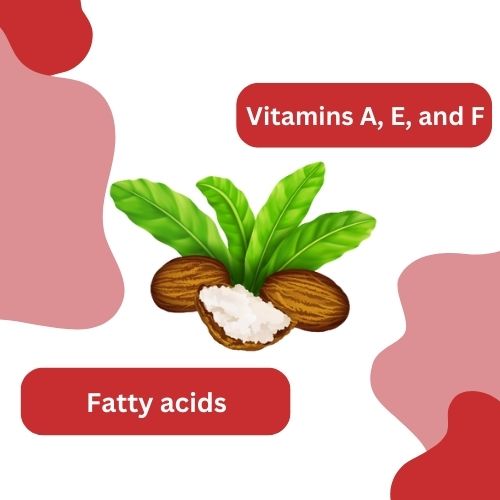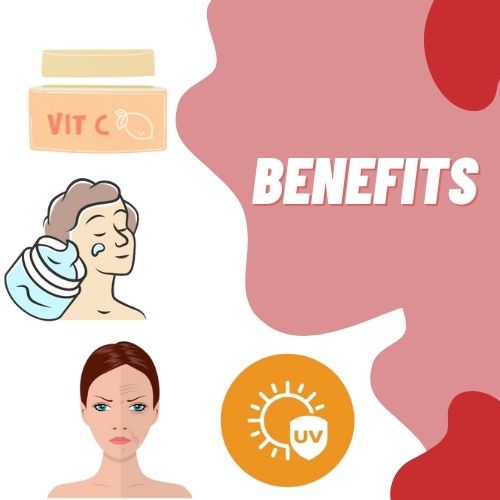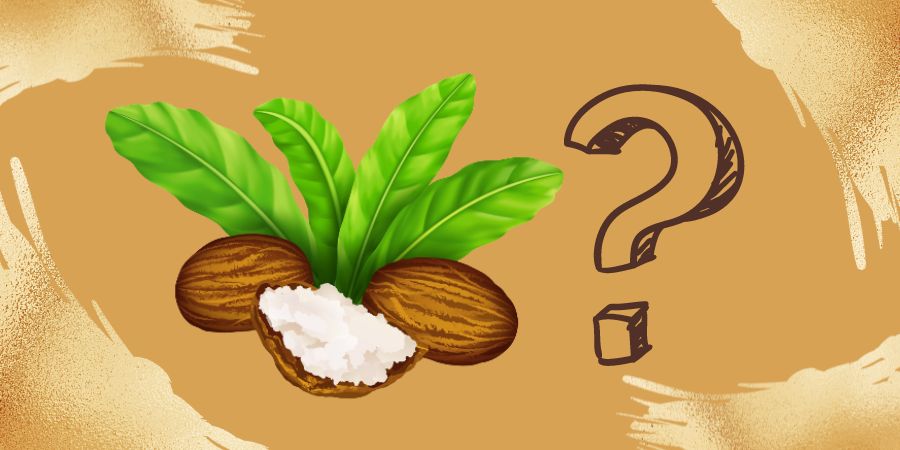From Guinea and Senegal to Uganda and South Sudan, shea butter is obtained from the nuts of karité trees that grow in the Sahel region. Millions of women across Africa receive employment and income from shea butter, which has been referred to as “women’s gold” for centuries, according to Africa Renewal.
Table of Contents
African Shea Butter
In shea fruit harvesting, women, often organized into cooperatives, use traditional methods. Once they crush the nuts inside, they extract the butter, which is then boiled, cleaned, packaged, and sold locally or internationally. The butter produced by shea trees is edible and non-toxic; as such, it can be used in cooking. However, it is mostly used for cosmetic purposes.
In parts of West Africa, especially in Ghana where the karité trees grow in the northern parts of the country, shea butter women extract shea butter that has a deep ivory hue.
An estimated three million African women work directly or indirectly with shea butter, according to the UN Development Programme (UNDP). Ghana, Côte d’Ivoire, Benin, and Togo are among the top shea nut-producing countries.
How women extract shea butter in Africa

Shea butter is solid at room temperature but melts with exposure to the sun. With a focus on Ghana, I discuss below how women extract shea butter and the various benefits that come with it.
To break the shells, the nuts are first boiled in a large pot.
In the process of removing the nuts from their shells, the nuts need to be cooled. Even though this process is time-consuming, it is often done by groups of women who make it a social activity.
In addition to cracking and roasting the seeds, the shells are used as cooking fuel.
After the seeds are roasted, they are beaten with water to release their rich fats.
Shea butter is produced by boiling, skimming, and cooling these extracts.
The chemical properties of shea butter
Shea butter can have a life span of up to 2 years when stored properly in a tight container away from direct sunlight.

Fatty acids
Linoleic, palmitic, stearic, and oleic fatty acids are found in shea butter and help to balance the oils on your skin. It also contains triglycerides, which are the fatty components of the shea nut that nourish and condition your skin.
Furthermore, it includes cetyl esters, a waxy component of shea butter that conditions skin and locks in moisture.
Essential vitamins
Vitamins A, E, and F are antioxidant vitamins present in shea butter, promoting circulation and healthy skin cell growth.
These vitamins also help to maintain healthy and clear skin. Omega 3 fatty acids, also present in shea butter, protect and revitalize your skin.
Melting point
Shea butter melts at room temperature between 31-38 degrees celsius and often becomes liquid as the temperature rises. As such, many vendors in the open market in Ghana would efficiently pour ice-cold water on it to keep it solid.
12 Benefits of Shea Butter

Below, we discuss the twelve benefits of cocoa butter on our overall health, skin, and hair.
1. Loaded with Vitamins & Antioxidants
Shea butter contains vitamins A, E, and F as well as fatty acids, which provide deep moisture to your skin. It also includes phenols, which are antioxidants similar to those found in green tea.
2. Protects Against the Sun
Shea butter has a natural SPF of 3 to 10 and produces a light protective layer on the skin to filter UV radiation.
Although it cannot be used as an efficient sunscreen, applying shea butter to your skin does provide some additional sun protection. Apply a generous amount over your favourite sunscreen before going outside.
It also protects the skin from pollutants and high winds.
3. It contains anti-inflammatory agents
Shea Butter promotes collagen development and is an excellent moisturiser. It relieves itchiness caused by strained skin while also naturally preventing your skin from clogging. When applied to the skin, shea slows the generation of cytokines and other inflammatory cells.
This may help to reduce irritation caused by environmental factors like dry weather as well as inflammatory skin disorders like eczema.
4. Suitable for all skin types
Shea butter is classified as a tree nut product. However, unlike most tree nut products, it has relatively few proteins that can cause allergies. Shea butter is free of chemical irritants that dry your skin and do not clog pores. As a result, it is suitable for almost any skin type.
5. It moisturises the skin
Shea butter is commonly used for its hydrating properties. These advantages are attributed to shea’s high fatty acid content, which includes linoleic, oleic, stearic, and palmitic acids.
These oils are quickly absorbed into your skin when shea butter is applied topically. They function as a “refatting” agent, replenishing lipids and quickly generating moisture. This repairs the barrier between your skin and the outside world, keeping moisture in and lowering your risk of dryness.
6. It slows immature ageing.
Shea butter’s high amounts of vitamins A and E promote strong antioxidant activity. Antioxidants have a vital role in anti-ageing. They shield your skin cells from free radicals, which can cause premature ageing and dull skin.
Shea butter also includes triterpenes. These naturally occurring chemical compounds are thought to inhibit the breakdown of collagen fibres. This may reduce the visibility of fine wrinkles and result in plumper skin.
7. It is antifungal.
Shea tree products have been proven to be effective in fighting fungal skin problems. While shea butter does not treat all fungal infections, it does kill the spores of the fungus that cause ringworm and athlete’s foot.
8. It may help prevent acne.
Shea butter contains a variety of fatty acids. This one-of-a-kind formula aids in the removal of excess oil, commonly known as sebum, from your skin.
At the same time, shea butter restores moisture to your skin and locks it into your epidermis, preventing dryness and oil deficiency. As a result, your skin’s natural oil balance is restored, which may help prevent acne from forming in the first place.
9. It helps promote cell regeneration.
The hydrating and antioxidant components of shea butter work together to help your skin develop healthy new cells.
This is due to your body’s continual production of new skin cells and the removal of dead skin cells. Dead skin cells accumulate on the skin’s surface, while new skin cells grow at the base of the upper layer of skin, or epidermis.
You will have fewer dead skin cells if you maintain a proper moisture balance on the surface of your skin.
10. It helps reduce the appearance of stretch marks and scarring
Shea butter, among its benefits, helps to prevent keloid fibroblasts, or scar tissue, from multiplying while stimulating healthy cell growth to take their place.
This may aid in the healing of your skin, reducing the appearance of stretch marks and scars.
11. It may help treat damaged hair.
Shea butter hasn’t been studied specifically for its ability to make hair stronger. However, a 2017 study found that a chemically similar West African plant made hair significantly more resistant to breakage.
Furthermore, shea butter, when used with other moisturisers, may help minimise dandruff flakes and the likelihood of flare-ups.
More research is required to assess the effectiveness of shea when used alone.
12. It may help relieve congestion
According to a 1979 study, shea butter may help relieve nasal congestion. Shea butter, when used in nasal drops, may help to relieve inflammation in the nasal passages. It may also assist in preventing mucosal damage, which frequently causes nasal congestion. When coping with allergies, sinusitis, or the typical cold, these benefits may be beneficial.
How to Store Shea Butter
Shea butter should be stored out of direct sunlight and heat. It is possible for shea butter to expire within one to two years, but with so many uses, you won’t leave it sitting that long! You can keep it in a cute, decorative jar on your bathroom counter or shelf.
Facts about shea butter
Shea butter has a shelf life of between six months and two years, depending on how you keep it.
- Shea butter is most beneficial when used in its raw form.
- Shea butter is edible.
- Raw shea butter is plant-based and vegan-friendly.
- Shea butter comes from tree nuts but is generally safe for those with nut allergies. Check with your doctor before using shea butter if you have a history of allergic reactions.
Frequently Asked Questions (FAQs)
Is shea butter edible for humans?
It is widely used in cosmetics as a moisturizer, salve, or lotion. Shea butter is edible and is used in food preparation in some African countries. Occasionally, shea butter is mixed with other oils as a substitute for cocoa butter, although the taste is noticeably different.
Is shea butter good for your skin?
High concentrations of fatty acids and vitamins make shea butter an ideal cosmetic ingredient for softening skin. Shea butter also has anti-inflammatory and healing properties. Using shea butter on your body, especially your face, can condition, tone, and soothe your skin.
Is all shea butter African?
Shea trees are native to West Africa, and most shea butter still comes from that region. Shea butter has been used as a cosmetic ingredient for centuries.
Should shea butter be refrigerated?
The answer is yes! However, it may not be necessary. Shea butter does not need to be in the refrigerator to have a good shelf life. However, if your temperatures are over 75 degrees F, you should keep it in your fridge.
Can I leave shea butter on my face overnight?
It is also recommended that you leave the shea butter on your skin overnight, as it should be on your skin for at least 8 hours. Shea butter works by absorbing into the skin, providing moisture without clogging the skin further.
Does shea butter fade dark spots?
Yes, using shea butter for skin discolouration can help both fade dark spots and help prevent them from forming in the first place.
How can you tell if shea butter is real?
You can identify Unrefined Shea by its cream or light yellow colour and natural, nutty scent. Unrefined Shea Butter is typically processed using the traditional handcrafted method. Properly processed, unrefined shea butter has an average shelf life of 24 months. Refined Shea Butter is white and odourless.
Can I put shea butter on my face?
To apply shea butter to your face, you’ll want to melt a pea-size amount in your hands before application. It can be hard to apply makeup on top of shea butter, so you’ll want to do this at night.
What does shea butter do to the lips?
Softens the skin: Because shea butter is an emollient, it hydrates your lips short-term and helps soften them over time. If you struggle to put lip colour on peeling lips, then shea butter may be just what you need to create a smooth, soft canvas.
What does pure shea butter smell like?
Shea Butter has a natural smell, which is not unpleasant to most people. It can smell mildly nutty, or some say, like coconut, or even woody in scent. Over time, the smell of the shea butter will diminish if unrefined, especially once it is used on the skin or if the shea butter is getting old.
Now it’s your turn.
Shea butter is a natural moisturiser just like cocoa butter. It comes from the karité trees that grow in parts of West Africa. Shea butter trading in northern Ghana continues to provide tremendous employment opportunities for more women in northern Ghana and Africa.
Shea butter also contains linoleic acid and other essential vitamins that nourish dry skin and keep it from losing moisture.
The moisturising and regenerative properties of shea butter make it an effective treatment for split ends and breakage too. It’s a great natural conditioner that locks in moisture without leaving your hair greasy or weighed down.
Consequently, you can use pure shea butter for cooking, or making skin or hair DIY products.
Also Read:
- Does Shea Butter Expire?
- Does Shea Butter Grow Hair?
- Does Shea Butter Darken Skin?
- How Long Does Shea Butter Last?
- What Does Shea Butter Smell Like?
- Does Shea Butter Help With Scars?
- What Does Shea Butter do for Your Hair?
- Does Shea Butter Help with Stretch Marks?
- Does Shea Butter Lighten Skin: What I Wish I Knew!
- Cocoa Butter for Skin Lightening: What I Wish I Knew!
- Shea Butter vs Cocoa Butter: The Ultimate Comparison Guide!



